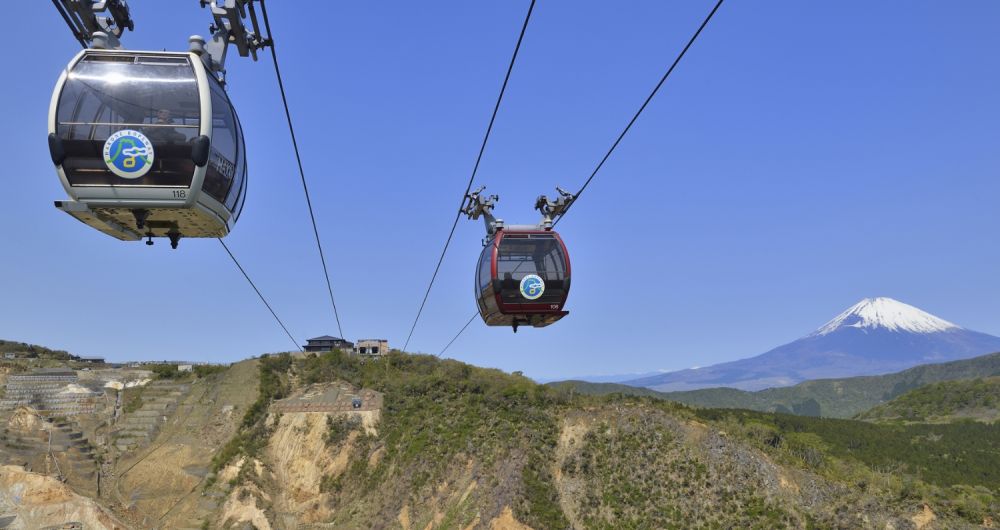

The Hakone Ropeway, part of the Hakone Tozan network, has been a significant draw for tourists since its inception in 1959. It was constructed to provide visitors with easy access to the scenic beauty of the Hakone region, which is renowned for its hot springs, natural beauty, and view of Mount Fuji. Over the years, the ropeway has undergone several upgrades to enhance the comfort and safety of its passengers, ultimately transforming it into a world-class tourist attraction.
The ropeway's journey begins at the Sounzan station and ends at the Togendai station, spanning approximately four kilometers. Initially, the focus of tourism in Hakone was centered on its therapeutic hot springs and the majestic Mount Fuji scenery. However, the development of the Hakone Ropeway brought a new dimension to the region's tourism by offering breathtaking aerial views of the surrounding volcanically active Owakudani Valley, Lake Ashi, and the various mountains in the area, including Mount Fuji on clear days.
Over time, Hakone evolved into a blend of natural, cultural, and modern attractions, integrating traditional Japanese inns known as "ryokans," museums, and art installations with the pristine wilderness, thus creating a multifaceted tourist experience.
In recent years, there has been a growing trend towards sustainable and eco-friendly tourism in Hakone. Visitors are increasingly interested in experiences that allow them to connect with nature while minimizing their impact on the environment. The Hakone Ropeway aligns with this trend by offering an environmentally friendly alternative to road transport and by providing educational information about the geothermal activity in Owakudani and the region's natural habitats.
The rise of experiential travel has also influenced tourism in Hakone. Tourists are seeking authentic, immersive experiences that go beyond sightseeing. They are interested in learning about the local culture, cuisine, and traditions. The Hakone Ropeway enhances the cultural aspect of the visit by allowing travelers to encounter the artistic and historical richness of Hakone, such as the Hakone Shrine and the Hakone Open-Air Museum.
Furthermore, there has been an increase in visitors utilizing digital platforms to plan their visit. Online ticketing and virtual reality previews of the ropeway experience have made it more accessible for tech-savvy travelers. Prioritizing convenience and information, these digital advances cater to the needs of the modern tourist.
A trip to the Hakone Ropeway offers a unique perspective of Japan's natural splendor. Visitors can expect a serene, yet exhilarating, journey above the volcanic landscape, with knowledgeable guides providing insights into the region's geology and history. The ropeway operates in all four seasons, each offering a different and dramatic vista - from the lush greenery of summer to the snowy scenes of winter. Hakone Ropeway's commitment to safety, sustainability, and cultural richness makes it a must-visit landmark for anyone traveling to Japan.